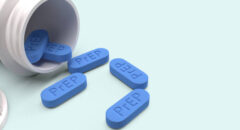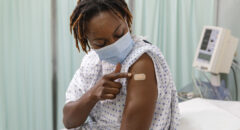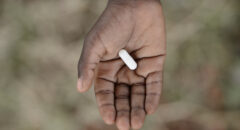 Infection with the human immunodeficiency virus (HIV) is a serious concern, but the risk of transmitting the virus to another person by everyday, non-sexual contact is very low.
Infection with the human immunodeficiency virus (HIV) is a serious concern, but the risk of transmitting the virus to another person by everyday, non-sexual contact is very low.
HIV lives in a person’s bodily fluids, primarily blood, semen, or vaginal fluids, and a person generally can become infected with HIV in one of three ways:
Having sex with an infected person. Anal, vaginal, and oral sex all pose risks for HIV transmission. Men who have sex with other men accounted for about half of the estimated 56,300 adults and teenagers diagnosed with HIV in the United States in 2006, according to the latest estimates from the U.S. Centers for Disease Control and Prevention (CDC). Another third of those diagnosed were infected through high-risk heterosexual contact.
Using needles or syringes that have been used by a person with HIV. Injection drug use was responsible for the transmission of about 13 percent of all adult HIV infections in 2006, according to the CDC.
Exposure of a fetus or infant to a mother with HIV. HIV positive pregnant women can infect their babies with HIV before birth, during delivery, and after birth while breastfeeding. To prevent babies from becoming infected while they’re still in the womb, doctors can treat a pregnant HIV-positive woman with antiretroviral drugs. A caesarean section performed before labor starts and before a woman’s water breaks can help prevent a baby from getting the virus during the birthing process. Completely avoiding breastfeeding eliminates this third possible method of transmission of the virus from mother to baby.
About 6,000 HIV positive women in the United States give birth each year. The combination of antiretroviral drug use, caesarean sections, and avoidance of breastfeeding has helped to reduce the rate of mother-to-baby HIV transmission among HIV-positive women to 1 to 2 percent.
You cannot get infected with HIV from toilet seats or water fountains, or by shaking hands or casual “dry” kissing on the cheek. Although it’s considered low risk, kissing with an open mouth could potentially transmit HIV from one partner to another if there is any blood in the saliva (such as from bleeding gums) or open sores in or around the mouth.
At one time, transmission of HIV through infected blood donations was a significant concern. However, the development of an effective blood test for HIV in the mid-1980s, as well as universal screening of all blood donors, has essentially eliminated this mode of transmission in the United States.
Who Is Hardest Hit by HIV?
Compared to the U.S. population as a whole, people diagnosed with HIV in 2006 were disproportionately African American (49 percent) and young (about one-third were between 35 and 44 years old). Men and women tend to become infected in very different ways: In that year, about two-thirds of the men diagnosed with HIV infection were exposed to the virus through male-to-male sexual contact. By comparison, about 80 percent of the women diagnosed in 2006 were exposed through high-risk heterosexual contact, for example, unprotected sex with a partner who had previously engaged in high-risk behavior and become infected himself.
Urban Myths About HIV Persist
More than 25 years after the first cases of HIV infection were reported, AIDS activists are still fighting “all the urban myths about transmission out there,” says Kali Lindsey, vice president for federal government affairs with the National Association of People with AIDS, an advocacy organization based in Silver Spring, Md. HIV is not spread through casual contact, and although the virus can be found in tears, sweat, and saliva, the CDC has never documented a case in which the disease was transmitted through these body fluids, he says.
To help lower the transmission of HIV, the CDC is advocating broader, more simplified testing guidelines. In making its recommendations, the CDC notes that people with HIV will be more likely to take steps to avoid spread of the disease once they know their HIV status.








